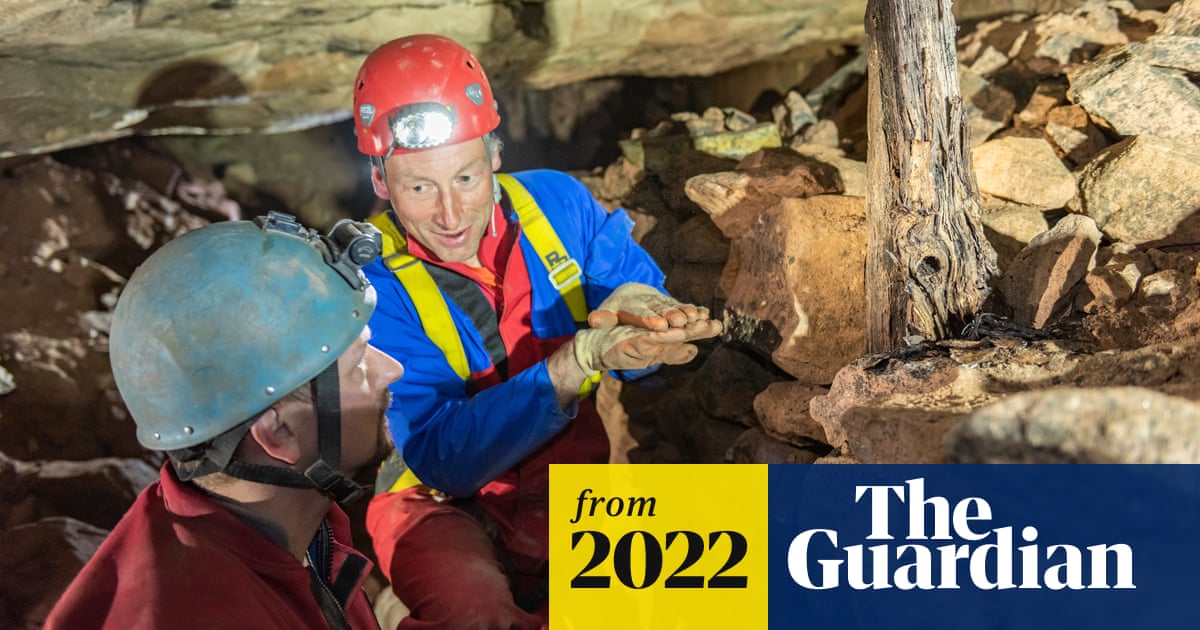
Cavers find pristine mineshaft frozen in time for 200 years
Experts describe cobalt mine at Alderley Edge as ‘time capsule’ thanks to lack of oxygen



The 3D model running on a set of VR goggles; have some one throw buckets of cold water over you and repeatedly hit your knee caps with a cricket bat. Replicates cave/mine exploration nicely from the discomfort of your own home.Is this the logical end point for conservation concerns?
I think we probably have to assume so yes, given the condition of the rope and timber in general, and the fact that when we broke through the air was particularly bad. Sadly we did not have a meter on the day of the breakthrough as I am sure it would have been interesting to get a measurement!The national trust article doesn't contain the word "oxygen" but the Guardian one does in 3 places stating the preservation is due to "lack of oxygen". Was low oxygen significant?
Presumably, there is some chemistry, or possibly biology going on to deplete the O2 in the air in the partially sealed passages. Any ideas what it may be? Are there any plans to sample the atmosphere over time remotely? A pipe through the cap and down the shaft perhaps?I think we probably have to assume so yes, given the condition of the rope and timber in general, and the fact that when we broke through the air was particularly bad. Sadly we did not have a meter on the day of the breakthrough as I am sure it would have been interesting to get a measurement!
The video flythrough you see is only a rough copy, they will further process to separate point cloud and images from what I understand, and hopefully remove some of the artifacts too. The end result should be very high quality and provide genuinely useful data for those who want to know more. The scanner had a resolution of up to 0.1mm at close range, although not sure if they went that high in this case.My thinking behind my comment of "Is this the logical end point for conservation concerns?" was more about high quality recording of the passage found, rather than the artefacts. The fly through provides one handle on giving people an experience of what a place looks like in addition to taking photos. (Though I like the idea of having a surround environment experience with added "throw buckets of cold water over you and repeatedly hit your knee caps".) Should we be encouraging such developments?
There is actually very little Cobalt in these mines, perhaps 1% at most. Manganese runs at about 8% I believe. Saying that there were some very black lumps of Wad that we have not seen in Cobalt mine which we need to send to MMU for analysis. There will be other elements within the wad I am sure some of the timbers will have contributed too.I don't know if it's the case here, but cobalt is often found with other elements such as sulphur, that are very reactive with oxygen (but normally more oxygen would leak into the system to replace that lost)
It's a bit silly really, it's not like you couldn't head back there and place it back for them to see! I can understand in some instances though!It's an interesting one, whether to leave or remove. We ended up giving the NT most of the 'portable' artifacts we found in Longcliffe, after thorough documentation first, They were concerned that with access being available, many of them might not survive constant attention, or worse, be stolen. However, I recently found a piece of medieval pottery in a stream in some woods near mine, and brought it home to photograph it, and notify the local archaeological service. The guy I spoke to essentially (though politely) told me off for not leaving it where it was, on the grounds that was it now 'out of context'. The amount of house-bricks and other recent detritus in the stream suggested it was already way out of context, and I'd already made that judgement before I brought it home. So it sits on my shelf at present - he suggested I take it to the local museum, but said as they may have quite a bit of this already, it would probably end up in a box and be forgotten. The endless dilemma of what to do.
Very true!As we've seen in Odin, age doesn't necessarily indicate decay/weakness in timber. Even in the shaley areas it holds up really well - we've used several for deviations, as pointed out on another thread. I suspect atmospheric moisture (or lack of) is the key, and possibly constituent gas variations in fairly enclosed systems - many of the gold/silver mines in the US look almost brand-new underground when it comes to the timber.
